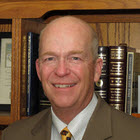
The single most important piece of equipment a police officer carries is his or her radio. It connects the officer to fellow officers, to the dispatch center, and ultimately to the citizens. Radio communications is also critical in fire & rescue work. This is how firefighters and paramedics communicate with one another, with commanders, with hospitals, and with dispatchers. The radio is almost exclusively the path by which 911 calls are dispatched to personnel in the field. Without radio communications, policing, fire fighting, and emergency medical services would revert to the late 1800s, when the call box was state of the art.
Because a public safety radio system is so important, I view it as a critical piece of municipal infrastructure, without which life in cities would be considerably different and more difficult. We generally understand that a water distribution system, sanitary sewers, electrical utilities, and roadways are vital infrastructure. Add to that list the public safety communications system.
There are around 3,000 radios on our system, dominated by the Lincoln Police Department and Lincoln Fire & Rescue, but including several other public safety agencies, such as the Lancaster County Sheriff’s Office, University of Nebraska Police Department, Airport Authority Police, Lancaster County Emergency Management, Air National Guard Fire & Rescue, Nebraska State Patrol, and Lancaster County Corrections Department. Other users include the Lincoln Public Works Department, Health Department, Parks and Recreation Department, our local hospitals, and Lincoln Public Schools. About 85% of the actual usage comes from the public safety agencies, and LPD alone accounts for over half of the system usage. Millions of times every year, our police officers and firefighters are mashing the push-to-talk button on a microphone or handheld.
Our radio system, much of which dates to the late 1980s, has reached the end of its life. The technology has moved on, and EDACS trunked radio systems are no longer manufactured or sold. Vendor support for many components has ended. While some bits and pieces are still serviceable, many of the core components are on borrowed time. It has been an excellent system, and has served us very well. It still does, for the moment, but with each passing day, we grow more susceptible to failures from which recovery will be more and more difficult. The time has come to modernize.
Like any major infrastructure project, this one will require a considerable expenditure–somewhere near $20 million. That’s more than an elementary school, but less than a middle school. We will need to do this about four times every century. This will be the second during my career, as I was involved when our 4-channel General Electric UHF radio system was replaced by EDACS. Now, I hope to be involved in the next transition to a P25 trunked public safety radio system. It is my highest priority for public safety in Lincoln. Mayor Beutler has asked our city council to consider a resolution to place a bond issue on the ballot this November, so the citizens of Lincoln can decide whether this is a project they can support.
It is important to realize that a radio system is much more than the radios, just as a cellular telephone network is much more than your cellphone. The guts of the network are things you never see and barely know about, but without which your phone or radio is merely an expensive brick: towers and equipment buildings, microwave links, site controllers, transmitters, fiber optic connections, cabling, antennae, the computer hardware and software that manages system, uninterrupted power supplies and backup generators, and much more. We hope to reuse as much of the equipment and facilities as is practicable, in order to keep cost down.
In this day and age, we take for granted that we can grab our cellphone, call 911, and engage an emergency response from law enforcement, fire, or EMS quickly and reliably. Fulfilling this expectation requires investing in the infrastructure that makes this possible.